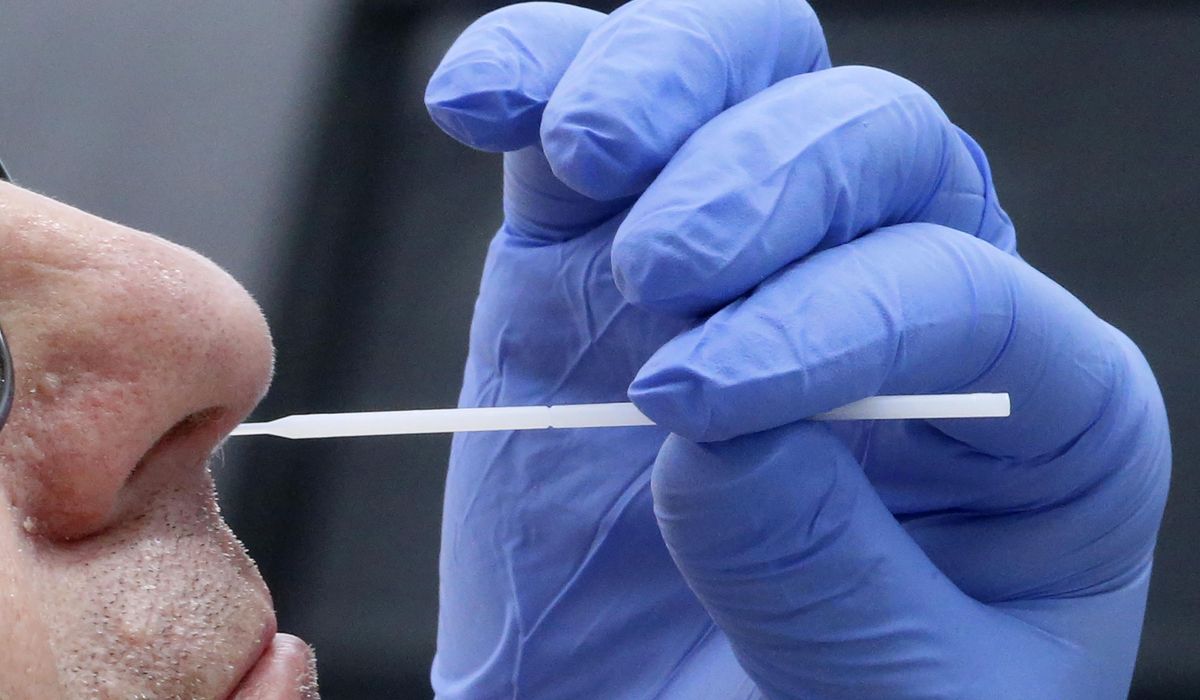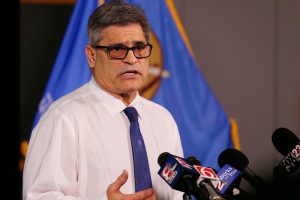Widespread coronavirus testing is key to returning life to normal, but the time and money involved is elevating an approach known as “pooled” or “group” testing, in which a bunch of people can be checked in one batch.
As economies reopen, pooled testing could represent an efficient way to look for the virus while slashing costs and preserving supplies and testing chemicals.
It is more of an aspiration than an operating plan right now, but it works like this: An employer, school or organization combines the swab samples of a group of as many as 100 workers or students. The samples are diluted in a solution and checked with one test. A negative result clears the entire group. A positive result means more testing — subjects could be sent home in the meantime — until the infected person is identified.
Although that might sound laborious, the probability, especially in regions with low rates of transmission, is that most test samples will turn out negative for the coronavirus and a load of workers can be cleared at once.
“If you can get the logistics in place, you can reduce your costs for the number of tests you have to do tenfold, if not a hundredfold. Theoretically, you can pool 100 samples into one and run all of those,” said Michael Mina, assistant professor of epidemiology at the Harvard T.H. Chan School of Public Health.
“I think we’re going to see this continue to become an increasingly utilized tool,” he said. “I don’t know if anyone is using it at this very moment as their actual policy. I think there is a lot of experimentation.”
The Nebraska Public Health Laboratory is pioneering the effort. It found it could reliably test for the virus in a batch and save chemical reagents and personnel time, with an overall increase in testing capability of at least 69%.
The city of Wuhan, China, where the virus was first discovered in humans in December, pooled samples in testing 9 million residents in 10 days in May.
The strategy should appeal to universities looking to test students this fall while contending with tight budgets, as well as places such as sub-Saharan Africa, which has limited resources to contend with COVID-19. Factories, meatpacking plants and package processing centers also might find it useful.
A good candidate is “any kind of business where people need to come together physically to do that business, and you believe there is a low prevalence [of the virus] overall, but there remains the risk of outside infection,” said Peter Frazier, an associate professor of operations research and information engineering at Cornell University who is working with the veterinary school on setting up a group testing program for the coronavirus.
Some states are looking into the practice.
Lynn Sutfin, a spokeswoman for the Michigan Department of Health and Human Services, confirmed “there have been discussions about this approach.”
Public health officials are eager to control a virus that is still infecting thousands of Americans per day, even as states reopen shops, offices and restaurants.
“I know that people are eager to return to normal activities and way of life. However, it’s important that we remember this situation is unprecedented and that the pandemic has not ended,” Robert Redfield, director of the Centers for Disease Control and Prevention, told reporters Friday.
On Sunday, New York Gov. Andrew Cuomo threatened to reinstate closings after seeing evidence that young people are ignoring rules on social distancing and face coverings.
The CDC says Americans must maintain social distancing, wash their hands frequently and wear masks in public to reduce the spread of the virus.
Testing is a key part of the fight because it allows trackers of COVID-19 to quarantine infected people and their close contacts to reduce the rate of transmission over time.
The concept of group testing isn’t new. It was pioneered by Robert Dorfman, who proposed it during World War II as a way to screen soldiers for syphilis.
It also has been used to screen for HIV, chlamydia and malaria, though the COVID-19 pandemic is an unprecedented challenge.
Mr. Frazier said he could see group testing becoming common as the pandemic response evolves.
“The thing that needs to happen is diagnostic labs need to develop this technology,” he said.
The Food and Drug Administration told The Washington Times it is “aware of these types of testing situations and is open to a variety of novel testing ideas, such as ‘batch’ testing or specimen pooling, and encourages all test developers to reach out to us to discuss appropriate validation approaches.”
Researchers at the University of Southern California said the U.S. could save billions of dollars by implementing a pooled-testing strategy for the 160 million people in the American workforce.
“While there are inherent challenges in this approach, including choosing appropriate pool sizes and factoring in test reliability concerns, our estimates suggest that pooled testing could lower testing costs by half or even three-quarters for many schools and businesses,” says a paper by the USC Schaeffer Center for Health Policy & Economics.
USC researchers who examined pooled testing outlined an example of how it could work for a company with 100 employees in a city with a COVID-19 prevalence of about 5%.
Workers are split into 20 groups of five workers each. Probability suggests five of the 100 workers will test positive and, at most, five pools will return a positive signal for the disease.
The company would retest the people in the five affected pools, meaning 25 more tests. In total, the business pays for 45 tests instead of the 100 it would need to check everyone individually.
The savings could increase exponentially if the company tests periodically.
Experts said a key part of the strategy is what employers or institutions do if they detect a positive reading because people in the affected pool must be notified and instructed to quarantine or take other precautions until they get individual results.
“It can be a very anxiety-provoking effort if there’s a long duration of time between telling somebody that the pool is positive to getting them their individual result,” Dr. Mina said. “That’s always a problem that we think about when it comes to turnaround time of tests.
“The shorter you can make it, the better, if you’re doing pool testing,” he said. “Because we don’t want to have people living in a state of anxiety for two days or all week.”



















